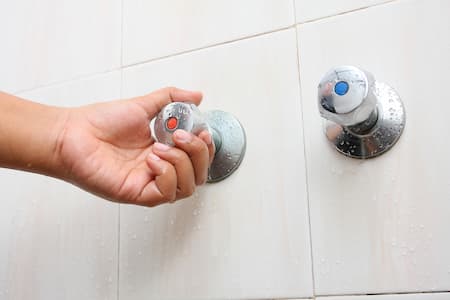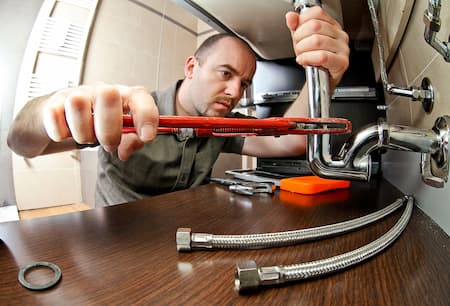
Can A Sewer Line Be Repaired?
When it comes to maintaining a home, many homeowners overlook one crucial aspect: the sewer line. Sewer lines are vital for carrying waste away from your property, and their maintenance is often taken for granted until a problem arises. The cost of sewer line repairs or even replacements can be quite substantial, making it essential to understand what affects these costs and how to navigate them efficiently. This article delves into the complexities of sewer line maintenance, providing you with expert advice, practical insights, and detailed information on the associated costs.
Understanding Sewer Lines: The Backbone of Your Home’s Waste System
What Are Sewer Lines?
Sewer lines are underground pipes that transport wastewater from your home to a treatment facility or septic system. They’re typically top-rated plumbers in Stockton made of materials like PVC, clay, or cast iron, each with its lifespan and susceptibility to damage.
Why Are Sewer Lines Important?
The importance of sewer lines cannot be overstated. They prevent sewage backflow into your home and ensure proper sanitation. A malfunctioning sewer line can lead to health hazards, property damage, and costly repairs.
Common Issues with Sewer Lines
Clogs and Blockages
One of the most common issues homeowners face is clogs in their sewer lines. This can occur due to:
- Grease buildup
- Tree roots infiltrating the pipelines
- Foreign objects being flushed down the toilet
Cracks and Breaks
Over time, sewer lines may experience cracks or breaks due to ground movement, corrosion, or age. These issues can lead to leaks that not only affect your plumbing but also compromise the surrounding soil.
Signs You Need Sewer Line Repairs
Frequent Backups
If you're experiencing frequent backups in your drains or toilets, it could indicate a problem within your sewer line that needs immediate attention.
Unpleasant Odors
A foul smell emanating from your yard or basement may signal a broken sewer line leaking waste into the environment.
From Repairs to Replacements: Navigating the Costs of Sewer Line Maintenance in Your Home
Sewer line maintenance encompasses everything from minor repairs to complete replacements. Understanding these costs will help you budget effectively and avoid unexpected expenses.
Cost Factors for Sewer Line Repairs
1. Type of Repair Needed
The nature of the repair significantly impacts costs. Simple clogs may cost as little as $100-$300 to fix, while more severe issues could run into thousands.
2. Location
The location of your home plays a role in repair costs too. Urban areas might have higher labor rates compared to rural zones.
3. Accessibility
If your sewer line is easily accessible, repairs will generally be less costly than if extensive excavation is required.
Cost Estimates for Common Sewer Line Issues
| Issue | Estimated Cost Range | |---------------------------|--------------------------| | Minor Clogs | $100 - $300 | | Major Clogs | $500 - $1,500 | | Cracked Pipes | $1,000 - $4,000 | | Full Replacement | $3,000 - $25,000 |
Sewer Line Replacement: When Is It Necessary?
Indicators for Replacement
Sometimes repairs aren’t enough; you may need to consider replacement if:
- The pipe material is outdated (like clay)
- Extensive damage has occurred
- Multiple sections show deterioration
Replacement Process Overview
Replacing a sewer line involves several steps:
Preventative Measures for Sewer Line Maintenance
Regular Inspections
It’s advisable to schedule regular inspections every few years using camera technology that provides real-time insights into your pipes' condition.
Proper Disposal Practices
Encouraging all household members not to flush inappropriate items down toilets can reduce clogging risks significantly.
Choosing Between Repair and Replacement: What Should You Consider?
When faced with significant damage, should you repair or replace? Here are some factors:
DIY vs Professional Services: What's Best for You?
While DIY methods can be tempting—especially when attempting minor repairs—they often don’t address underlying problems effectively. Hiring professionals ensures you receive accurate diagnoses and quality work but at a greater expense.
Finding Trusted Plumbers for Sewer Line Work
What To Look For in Plumbing Services
- Credentials and certifications
- Customer reviews
- Warranty options on work performed
Questions To Ask Before Hiring
- How long have you been in business?
- Can you provide references?
- What warranties do you offer?
FAQ Section
1. What causes sewer line backups?
Sewer backups are commonly caused by clogs due to debris accumulation or tree root infiltration.
2. How often should I have my sewer lines inspected?
It’s recommended every 2–3 years but more frequently if you've had prior issues.
3. Can I perform my own sewer line repairs?
While minor clogs may be addressed DIY style using tools like plungers or snakes, professional help is advised for significant issues.
4. How much does it cost to replace a sewer line?
Replacement costs range widely based on factors like length and material but typically fall between $3,000 - $25,000.
5. Are there any signs indicating I need a replacement instead of just repairs?
Yes! Frequent backups despite multiple repairs often signal it's time for replacement along with visible deterioration in pipe material.

6. Does homeowners’ insurance cover sewer line damages?
Coverage varies by policy; reviewing your plan details will clarify any specific coverage regarding sewer lines.
Conclusion
Navigating the maze of sewer line maintenance—from basic repairs to full replacements—can seem daunting at first glance; however understanding what influences these costs empowers homeowners tremendously when confronted with plumbing dilemmas related specifically to their sewage systems. By being proactive about inspections and addressing potential issues before they escalate into costly problems down the road ensures not only peace-of-mind but also protects one's investment—the home itself!

In closing: whether you're dealing with routine maintenance or considering significant upgrades—as this guide illustrates—staying informed grants you an edge over unforeseen expenses related directly back toward those ever-important networks beneath our feet!